The Fender Jaguar is an electric guitar introduced in 1962. A descendant of the Jazzmaster, the Jaguar quickly caught on in the emerging Surf music scene. It, the Jazzmaster, Mosrite and Stratocaster became the guitars most associated with the style.
The Jaguar became popular during the 1980s with the Alternative Rock movement and again in the 1990s with grunge rock bands.
History
The Jaguar was based on the Jazzmaster, with the same, "offset waist" body and "floating tremolo" system. Unlike the Jazzmaster, the Jaguar was fitted with a shorter 24-inch scale, 22-fret neck (the first Fender guitar to have 22 frets) and featured smaller single-coil pickups with notched side plates that improved RF shielding, making the Jaguar less prone to interference than the more popular Stratocaster and Telecaster.
Although the Jaguar and the Jazzmaster shared the same dual-circuit scheme, the Jaguar had a more complex second (lead) circuit consisting of three switches on the lower bout: the first two were on/off switches for the neck and bridge pickups, respectively, the third switch engaged a capacitor that served as a high-pass filter. This switch was often called the "strangle" switch among players, due to the fact that when it is switched on, the Jaguar attains a treble-accented tone quality that easily cuts through a full band sound. The rhythm circuit, set into operation when the upper bout switch is flicked upwards, gives the guitar a bassier, neck pickup only sound, with individual volume and tone rollers to preset. Another of the Jaguar's features was a spring-loaded rubber string mute, which was flipped upwards from under the strings by a lever. The mute was designed for guitarists who had to palm mute for extended periods, which was difficult or impossible on the Jaguar's floating bridge without knocking the bridge out of position. This feature proved unpopular as it sent the guitar out of tune when it was used improperly. When properly adjusted, the mute will apply light pressure to heavy-gauge, flatwound strings without sending the guitar out of tune.
Like the Jazzmaster and Bass VI, the Jaguar has an unusual floating tremolo arm mechanism that was a complete departure from the "synchronized tremolo" system found on the Stratocaster. Leo Fender believed that this new design was superior to previous designs since the bridge actually moved backwards and forwards along with the strings during tremolo use, thereby maintaining proper intonation even under duress, and preventing strings from binding. This floating bridge concept was also later used on the Fender Mustang. The floating tremolo mechanism also features a built-in tremolo lock, which helped the player preserve the guitar's tuning in the event of a string breakage and easing removal of the tremolo arm.
Released in 1962, the Jaguar never enjoyed the popularity of its Stratocaster and Telecaster siblings. After several upgrades - which included custom finishes, a bound neck, pearloid block inlays, maple fingerboard with black binding, and block inlays - the Jaguar was discontinued in 1975 after a thirteen year production run.
Resurgence
In the 1990s the popularity of the Jaguar & Jazzmaster exploded when they saw heavy use by various alternative rock and grunge bands such as Sonic Youth, Nirvana, Bush, My Bloody Valentine, Smash Mouth, The Flaming Lips, Stereolab, Pixies, and Spacemen 3.
One of the reasons the Jaguar became so immensely popular among indie rock artists is because they are one of the few solid body tailed bridge guitars produced by a major manufacturer. The Jaguar and the Jazzmaster both have an accidentally created, primitive third bridge mechanism in their floating bridge with limited timbre when used in an extended technique. When the strings are strummed behind the bridge, a unique chiming sound is created that has come to be associated with Sonic Youth. Even when strumming in front of the bridge, the long string length behind the bridge coupled with the low break angle over the bridge functions as a "sink" for vibrational energy, producing sympathetic resonance which can function as a counterpoint when power chords are played on different string pairs.
It has also been known that Jaguars and Jazzmasters were popular with late 80's indie artists precisely because of their unpopularity with more traditional guitar players at the time. This meant that Jaguars and Jazzmasters were far cheaper than vintage Stratocasters or Telecasters and therefore struggling musicians like J. Mascis and Sonic Youth could afford to own a high quality vintage Fender guitar where they could not before. In the 80s, pre-CBS models from the early 1960s often sold for under $100 at a time when their more popular contemporaries went for ten times that amount.
Jaguars have also found favor among players with small hands. The Jaguar and Mustang are two guitars in the Fender lineup with a short (24 inch) scale length and slim neck. Players with small hands find these necks easier to play when attempting difficult chords and long stretches.
Reissue
Fender reissued the 1962 version of the Jaguar in 1999 as part of its American Vintage Series (lower cost Japanese-made versions have been available since 1986/87, originally made of basswood, now of alder like their American counterparts). Several other variations have been released within the last decade, including several humbucker versions and a Jaguar bass guitar in 2006. Fender of Japan also produces Jaguars for its own domestic market with numerous special editions including an accurate version of Kurt Cobain's modified model. As of 2007, the main difference between Japanese and American models is the electronics - American models use higher quality chrome rather than stainless steel parts and have brass shielding plates installed in the cavities (Japanese guitars made before 96/97 also have brass shielding). American Jaguars have nitrocellulose lacquer. No standard US made AVRI Jaguars sport matching headstocks unlike their vintage counterparts, however many Japanese models do, and also offer some custom colors not found on American models.
Although Fender has many signature Stratocasters and Telecasters designed in conjunction with famous players and the first signature Jazzmasters were introduced in 2007, no signature Jaguars currently exist. In the past, a Kurt Cobain replica Jaguar was made for the Japanese domestic market and the Fender Jag-Stang, intended as a Mustang/Jaguar hybrid, was built for Kurt Cobain with his design input.
In May 2008 Fender introduced the Classic Player Series Jaguar and Jaguar HH with dual Enforcer humbuckers, which are made in Mexico and sold for under $1000. Fender have made numerous changes to the classic design, however, replacing the bridge with a Tune-o-matic type, giving it a 9.5" fretboard radius, moving the tremolo plate closer to the bridge and installing high output pickups. This Classic Player guitar is also available as a "1966" limited-edition version with a bound neck featuring rectangular block inlays and CBS-style decals as of 2009.
In September 2010 the Black Top Jaguar HH has been introduced as part of the Mexico-made Black Top series. Features include a solid alder body with gloss polyester finish, chrome hardware, dual Hot Vintage AlNiCo humbucking pickups with chrome metal covers and black skirted amp knobs. Other refinements include a maple neck with a 9.5”-radius rosewood fingerboard, 22 medium-jumbo frets, 24"-scale length, an Adjust-o-Matic stop tailpiece and a 3-way toggle switch.
Variations
Fender Jaguar Special HH
Has the same body shape as the standard Jaguar, but is equipped with two low-output Fender designed Dragster humbucking pickups, a fixed adjusto-matic bridge (similar to a Gibson Tune-O-Matic), a 24" scale length, and chrome knobs. It is made in Japan.
Fender Jaguar Baritone Special HH
Similar to the Jaguar HH, except that it has fewer switching options, and a longer 27" scale length (as opposed to the normal 24"), and is designed to be tuned a fourth below a standard guitar (B E A D F# B, low to high). This guitar is only available in black with a matching black headstock and chrome hardware to emphasise its unique design.
Fender Classic Player Jaguar Special HH
A Jaguar modeled after the guitars of players such as Kurt Cobain. This Jaguar has two Fender Enforcer humbuckers which are able to be coil-tapped, a Gibson-style "adjust-o-matic" bridge, and the whammy-bar tailpiece has been moved closer to the bridge. It is made in Mexico.
Fender Jaguar Baritone Custom
A MIJ combination of a Jaguar and a Fender Bass VI with additional features. It has a fixed bridge, a 28.5" scale length and heavier strings (the same set as the slightly longer Bass VI) to achieve an E-E tuning one octave lower than a standard guitar. Renamed the Fender Jaguar Bass VI Custom (some Fender catalogues omit the word Jaguar) a few months before it was discontinued.
Fender Jaguar Bass
Essentially a Fender Jazz Bass with a Jaguar-shaped body and Jaguar-styled switching options. Features a switchable on-board preamp with bass/treble controls.
Squier Jaguar
A Jaguar, with two Duncan Designed humbuckers, basswood body, a Duo-Sonic style hard tail bridge, and stacked controls. A Jazzmaster is also offered with similar styling. The only difference is the Jazzmaster has two single coil pickups, instead of humbuckers.
Fender Blacktop
A Jaguar with high-output humbuckers, alder body, maple neck with rosewood fretboard, 9,5" radius, T.O.M./STP style bridge, volume and tone pots and a 3-way Gibson style pick-up switch.
Series : American Vintage
Model : 0100900800
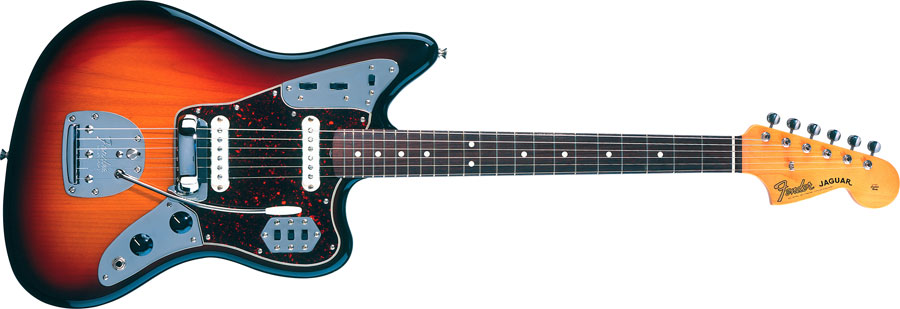
Classic Player Jaguar Special
Series : Classic Player
Model : 0141700309
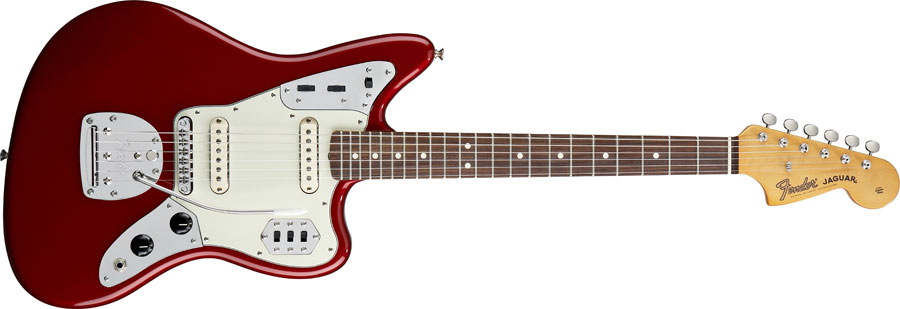
Classic Player Jaguar Special HH
Series : Classic Player
Model : 0141710305
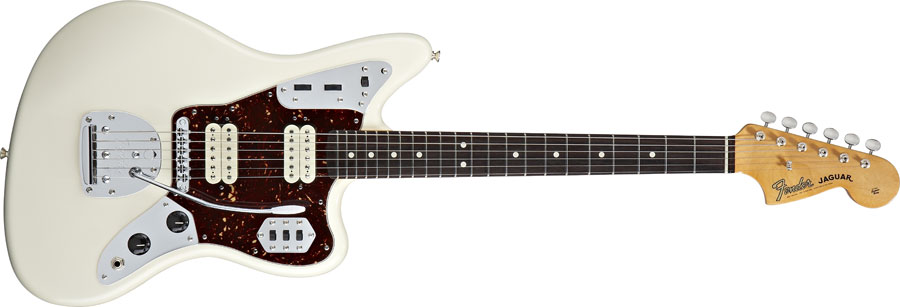
Special Edition Jaguar HH
Series : Special Edition
Model : 0259200306
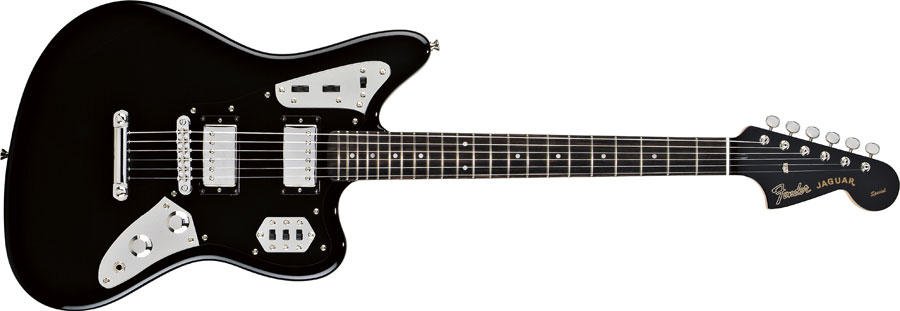
Blacktop Jaguar HH
Series : Blacktop
Model : 0148300506
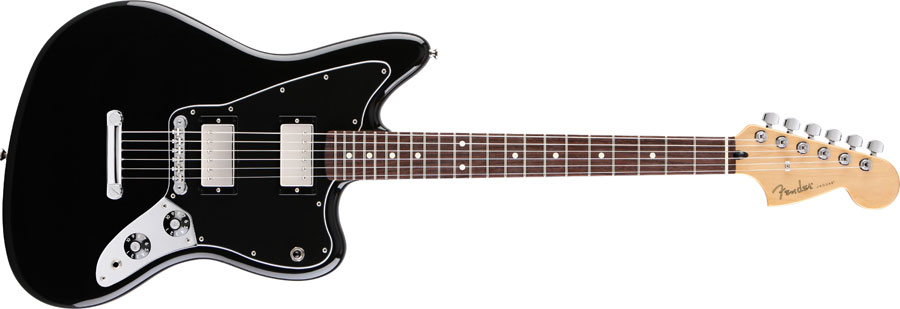

No comments:
Post a Comment